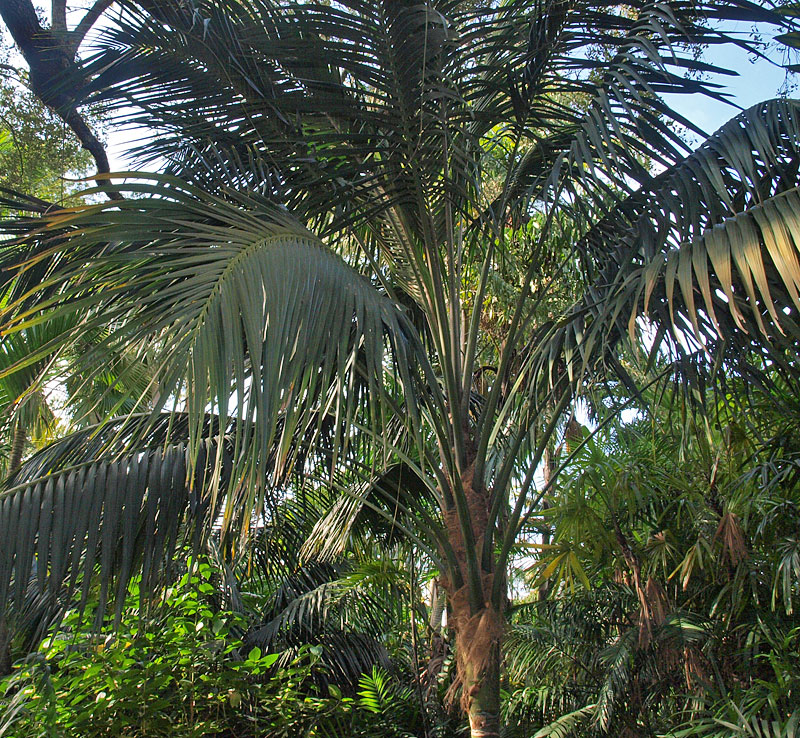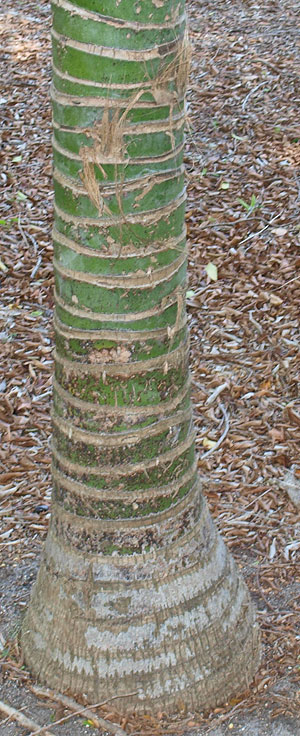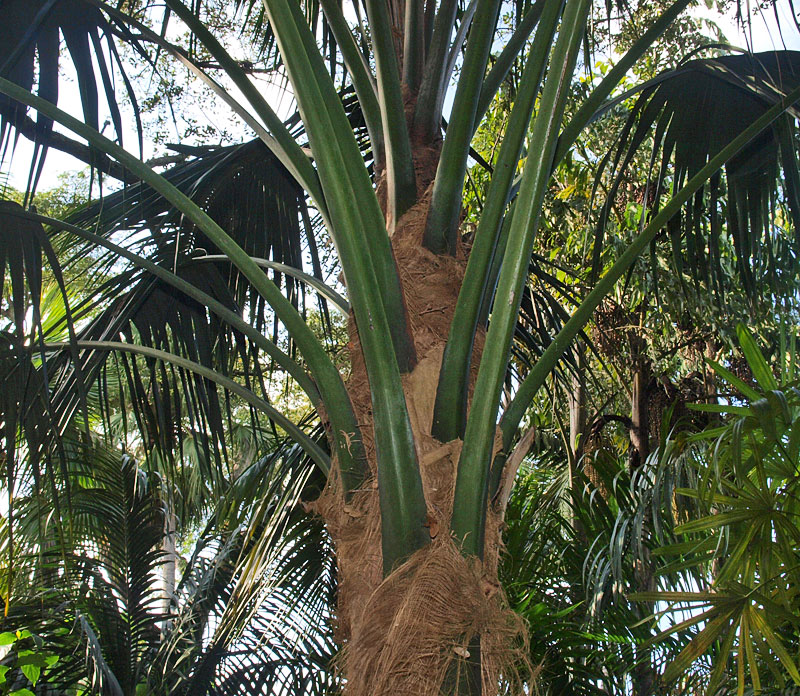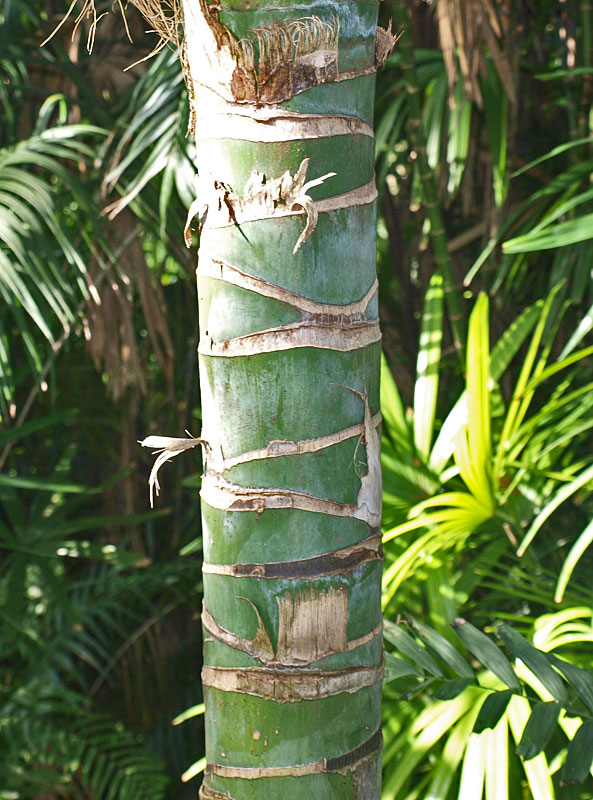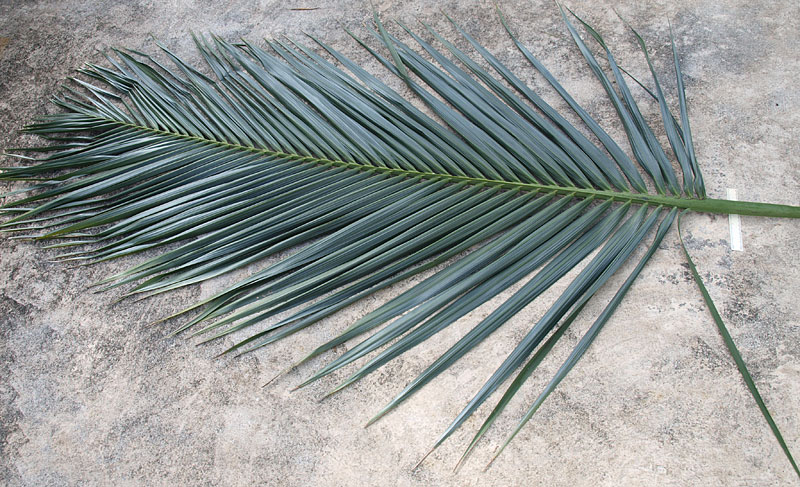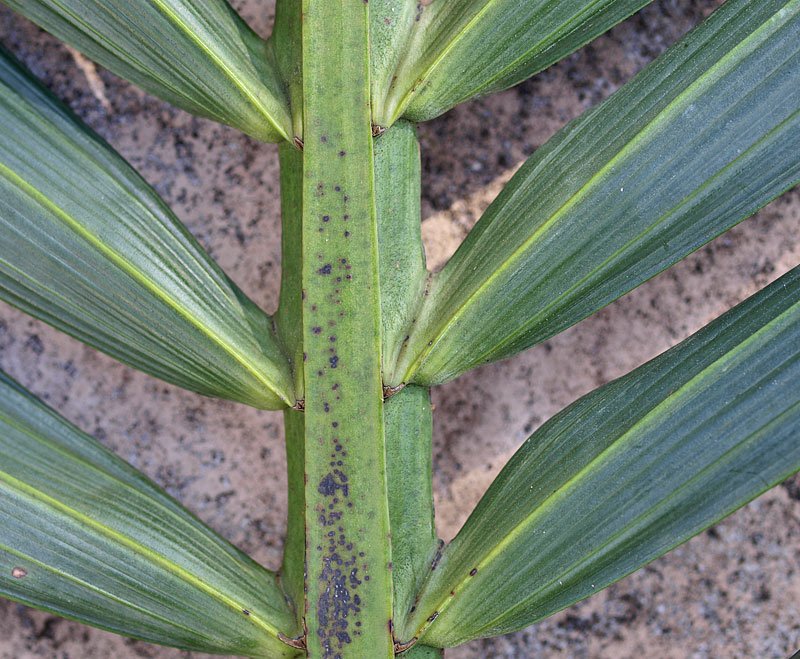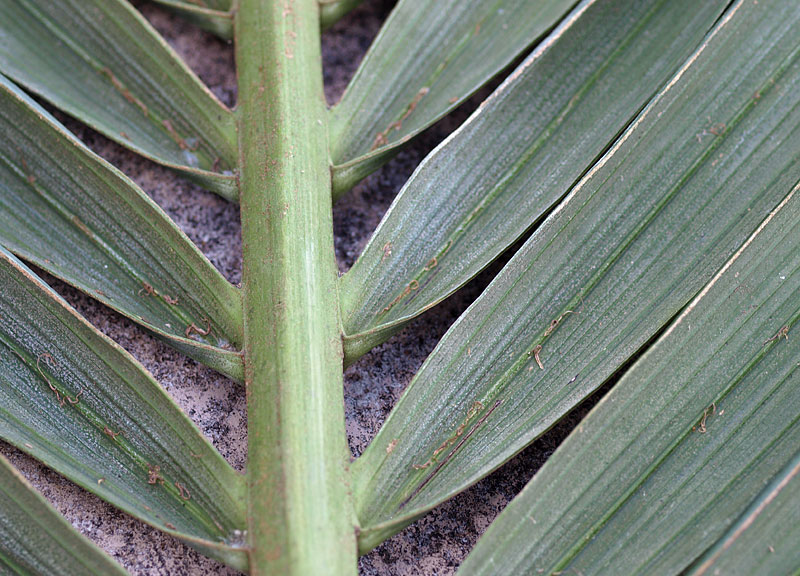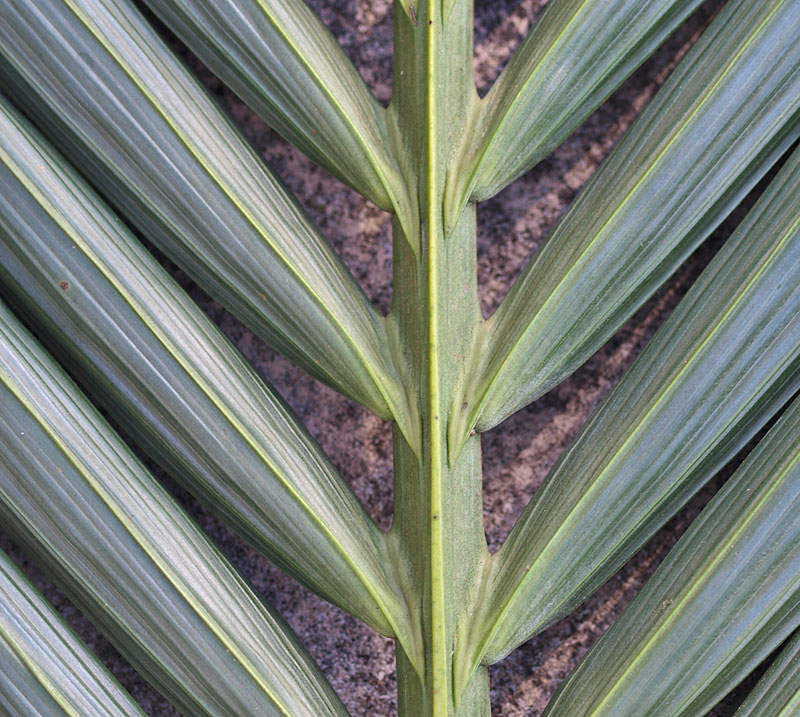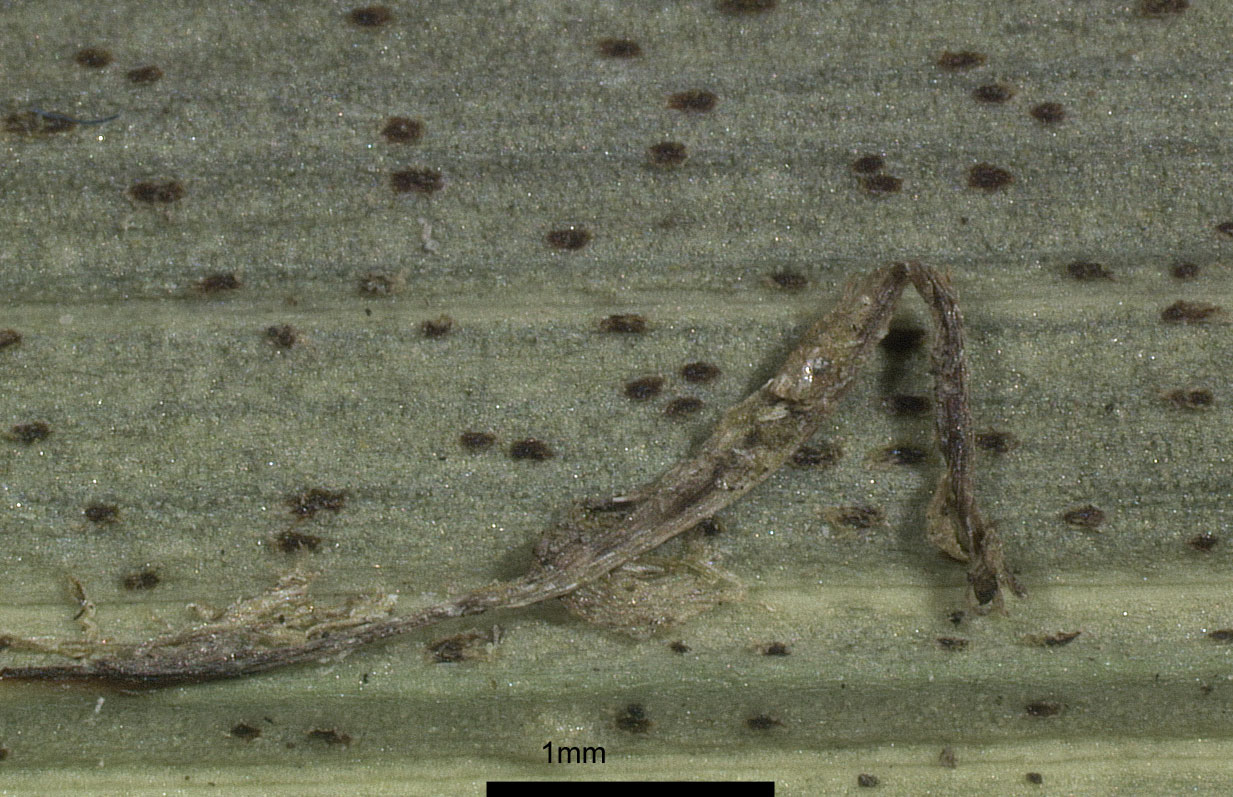Howea forsteriana
|
Howea forsteriana canopy |
|
Howea forsteriana young stem with leaf scars, bulging at the base and turning gray |
|
Howea forsteriana conspicuous fibers and long petioles |
|
Howea forsteriana young stem with leaf scars |
|
Howea forsteriana leaf |
|
Howea forsteriana leaf rachis with leaflets attached; yellow midrib |
|
Howea forsteriana undersurface of leaf with rachis and pale green leaflets attached; ramenta along midrib |
|
Howea forsteriana leaf rachis with leaflets showing midribs and prominent secondary veins |
|
Howea forsteriana close view of tan ramenta on leaflet under surface (mm scale) |
Common name
kentia palm, forster sentry palm
Description
Stems: Solitary, erect to 20 m tall and 15 cm in diameter, bulging at the base; young stems green but turning gray with age; ring scars are prominent, raised, and undulating. Leaves: Pinnatepinnate:
like a feather; palms with pinnate leaves usually have compound leaflets attached to a rachis, although a pinnate leaf may be entire with pinnate veins (e.g., <em>Chamaedorea metallica</em>)
, reduplicatereduplicate:
Most palm leaflets or leaf segments are obviously folded. If the folds create an upside-down V-shape, with the margins lower than the midrib (so that rain might "run off the roof"), the folding is reduplicate.
, to 4 m long, with drooping, linearlinear:
term to describe leaves and leaflets that are narrow with nearly parallel margins; like a line
, dark green (lighter green below) leaflets regularly arranged in a single plane. The petiole is not armed and no crown shaftcrown shaft:
a cylinder of clasping leaf sheaths toward the apex of the stem, found in some pinnate-leaved palms (e.g., <em>Wodyetia bifurcata</em>)
is formed from leafleaf:
in palms -- the leaf blade (which is usually divided into leaflets or leaf segments), the petiole (or leaf stalk) and the sheath (which forms the attachment of the leaf to the stem)
sheaths, but they disintegrate into a conspicuous mass of woven brown fibers. Flowers and fruit: Inflorescences are pendulous spikes, to 2 m long, with several spikes growing from a leafleaf:
in palms -- the leaf blade (which is usually divided into leaflets or leaf segments), the petiole (or leaf stalk) and the sheath (which forms the attachment of the leaf to the stem)
axil. Staminatestaminate:
a flower bearing stamens but no pistils; a “male” flower
and pistillatepistillate:
a flower bearing a pistil but no stamens; a “female” flower
flowers are produced on the same inflorescences and are white in color. Fruits are up to 4-5 cm long, ovoid, and red or maroon when ripe.
Diagnostic features
Field: Solitary, erect palms with oblique ring scars on green stems, slightly arching pinnatepinnate:
like a feather; palms with pinnate leaves usually have compound leaflets attached to a rachis, although a pinnate leaf may be entire with pinnate veins (e.g., <em>Chamaedorea metallica</em>)
leaves, leaflets medium green above and lighter below, with prominent secondary veins and yellowish midrib, and drooping inflorescenceinflorescence:
the reproductive structure of a flowering plant, including palms, consisting of flowers and associated bracts
spikes
Lab: Small scales on the abaxialabaxial:
away from or the side of an organ facing away from the axis (<strong>ab </strong>as in <strong>ab</strong>andon); for example, the lower surface of a leaf blade or petiole
leaflet surface and tan ramentaramenta:
irregularly shaped, thin scales, sometimes found along the abaxial midrib of a leaflet
along midrib
May be confused with
Howea belmoreana which is smaller, has leaflets that are held in a V-shape and are dark green above and below, and a single inflorescenceinflorescence:
the reproductive structure of a flowering plant, including palms, consisting of flowers and associated bracts
spike from a leafleaf:
in palms -- the leaf blade (which is usually divided into leaflets or leaf segments), the petiole (or leaf stalk) and the sheath (which forms the attachment of the leaf to the stem)
axis
Distribution
Native to Lord Howe Island
Additional comments
This species is often grown as an indoor ornamental.
Scientific name
Howea forsteriana (C. Moore & F.J. Muell.) Becc.
Family
Arecaceae/Palmae
Synonyms
Denea forsteriana O.F.Cook
Grisebachia forsteriana H.Wendl. & Drude
Kentia forsteriana F.Muell.


